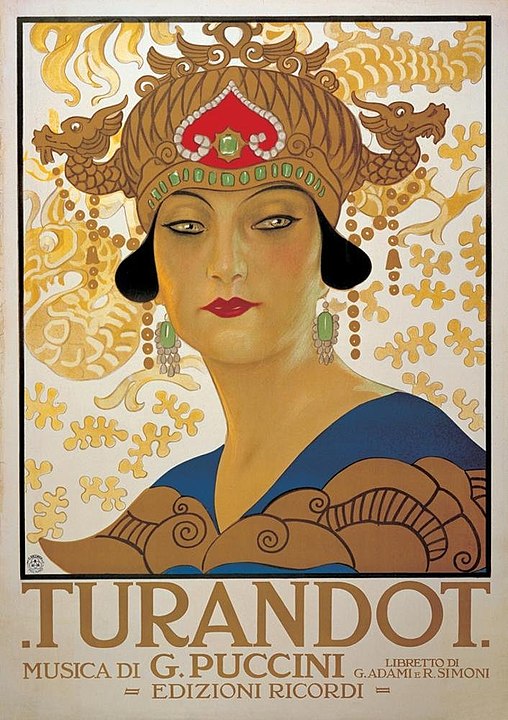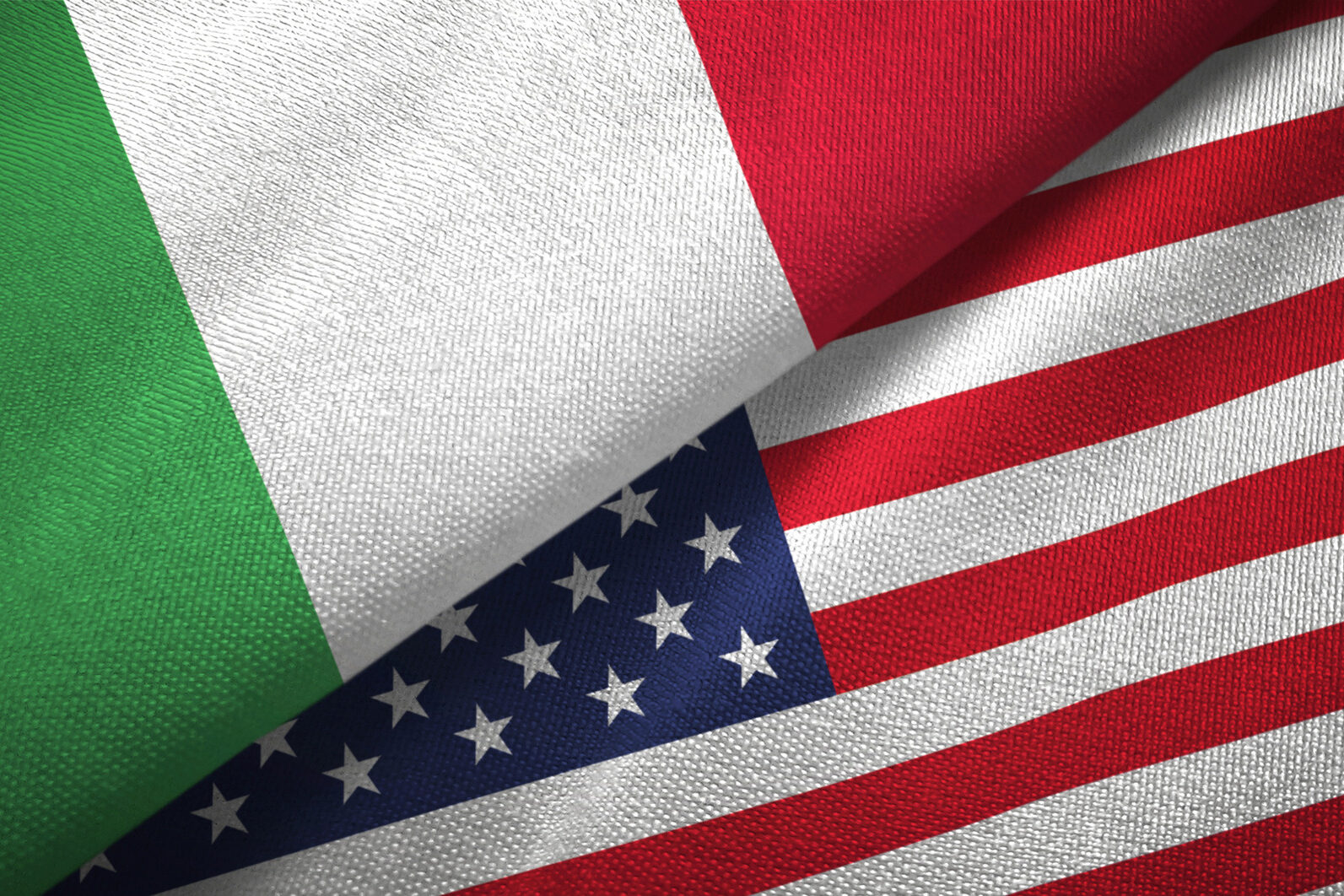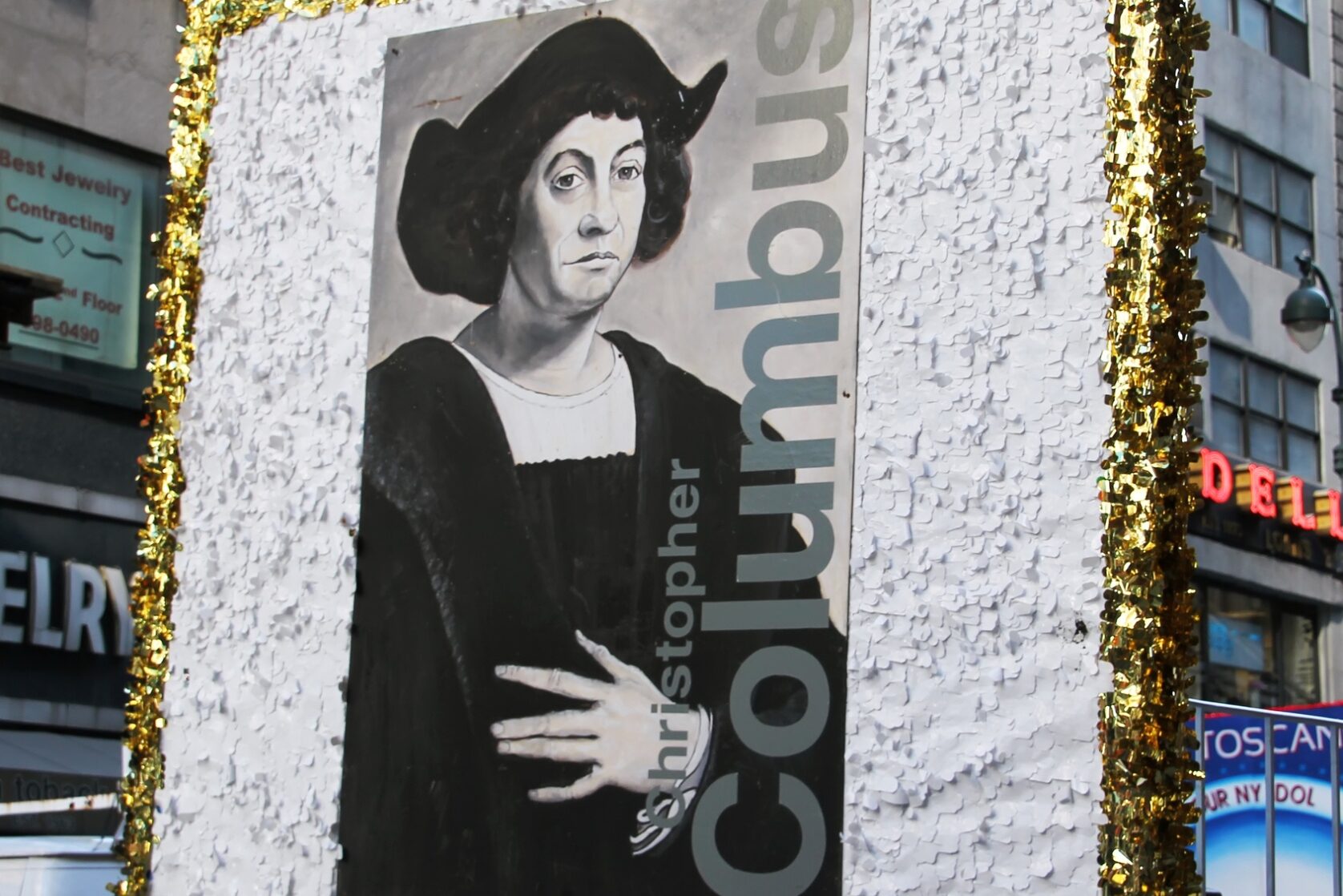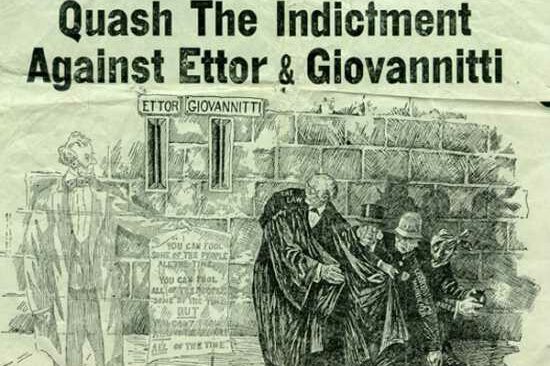Dear Readers,
April (Aprile) comes from the Latin word aperire, which means to open.
***
St. Francis of Paola was born in Paola, Calabria, Italy, in April 1416. He cured the sick, prophesized the future, and was a major influence on five kings and seven popes. He was educated by the Franciscans at San Marco and, at the age of 15, he went to live as a hermit in a cave. He eventually founded nearly 500 monasteries and was canonized just 12 years after his death at age 91.
***
Herb Caen, long-time columnist for the San Francisco Chronicle (he began in 1935), was born on April 3, 1916. He wrote thousands of words a week and vacationed in Italy often.
***
Umberto Nobile, a pioneer in Arctic aviation, was born at Lauro, near Salerno. In 1926, with Amundsen of Norway and Ellsworth of the USA, he was the first to fly over the North Pole in the dirigible “Norge,” from the North of Norway (Spitzbergen) to Alaska.
***
The S.S. Titanic sank on April 14, 1912. The Titanic sank after hitting an iceberg in the North Atlantic and cost 1,517 passengers their lives. However, Guglielmo Marconi‘s invention, the ship-to-shore radio, helped save lives after the supposedly “unsinkable” luxury liner sank. Of the 2,340 passengers and crew, more than 1,500 perished. Many were women and children immigrants on cheap “steerage” passages. Especially heroic was the ship’s band, which played hymns as the ship sank.
***
Ed Sullivan discovered Topo Gigio (which means Little Louis Mouse in Italian) in London. He was preparing a program that starred Judy Garland and when British talent agent Lew Grade showed him a tape of the little mouse, Ed immediately added him to the performance. The show was broadcast on April 14, 1963, and marked Topo Gigio’s American television debut.
Topo Gigio was the brainchild of Maria Perego of Italy, who operated her creation with the assistance of two other people. A third supplied the voice. The quartet did not speak English and communicated with the program staff through an interpreter.
***
Sicily declared itself independent from Naples on April 13, 1848, but in May 1849, Neapolitan troops entered Palermo, completing their reconquest of the island.
***
Shirley Temple, a bright spot in the dim days of the Depression, was born on April 23, 1928. Shirley at three years old did a one-reeler Baby Take a Bow. By the time she was five, she was a star. Her huge doll collection began with a large Lenci doll — made of pressed felt in Torino, and beautifully gowned in pink organdy — named “Pinkie.” It was given to her in 1934 when she co-starred with Jane Winters in the Fox Film “Bright Eyes;” her collection grew to include over a thousand pieces, as people kept sending her dolls which she later loaned to children’s hospitals for display and fundraisers.
***
St. Mark is the patron of Venice and his relics are preserved in the Cathedral of St. Mark. April 25 is his feast day. St. Mark is a man who might be called a “secretary” to Saint Peter, a raconteur of wonderful stories about things that happened when Jesus was on Earth, traveling around with his Apostles. Mark wrote down the things Peter said, and he is the author of one of the Gospels.
***
Turandot, the opera by Giacomo Puccini, was first performed in April 1926 at the Teatro alla Scala in Milan, Italy. Turandot, due to many painstaking revisions, became Puccini’s most fussed-over opera. He, in fact, did not receive a libretto for the final duet that suited him until mid-1924, which explains Puccini’s inability to complete the score before his death, in late 1924. Turandot was then completed by Franco Alfano.
***
The parachute was first sketched by Leonardo da Vinci in his notebooks in the 1490s. A compatriot, Fausto Veranzio, published a description of a workable parachute in 1595 and, in the late 1790s, two men descended from air balloons via parachutes, breaking a leg upon landing. On April 28, 1919, a brave fellow leaped out of an airplane, testing the very first parachute that actually worked. He floated down through the sky and landed safely back on the ground.
***
The Piemontesi nel Mondo Bulletin, edited by Andrew M. Canepa, informs that the Bagna Cauda event will be held at the Galileo Club of Richmond, California. This event may be sold out, but all my Piemontesi readers will certainly enjoy belonging to this group. For more information, you can contact the group at adnot@yahoo.com, or you can write to:
Piemontesi nel Mondo
c/o Italian Community Services
678 Green St. #3
San Francisco, CA 94133
Even if you do not get around much anymore, you can enjoy their Piemontese classes online!
Cari lettori,
Aprile deriva dalla parola latina aperire, che significa aprire.
***
San Francesco da Paola nacque a Paola, in Calabria, Italia, nell’aprile del 1416. Guarì i malati, profetizzò il futuro e ebbe grande influenza su cinque re e sette papi. Fu educato dai francescani a San Marco e, all’età di 15 anni, andò a vivere da eremita in una grotta. Alla fine fondò quasi 500 monasteri ed fu canonizzato solo 12 anni dopo la sua morte all’età di 91 anni.
***
Herb Caen, editorialista di lunga data del San Francisco Chronicle (iniziò nel 1935), nacque il 3 aprile 1916. Scriveva migliaia di parole alla settimana e andava spesso in vacanza in Italia.
***
Umberto Nobile, pioniere dell’aviazione artica, nacque a Lauro, vicino a Salerno. Nel 1926, con Amundsen della Norvegia e Ellsworth degli Stati Uniti, fu il primo a sorvolare il Polo Nord sul dirigibile “Norge”, dal nord della Norvegia (Spitzbergen) all’Alaska.
***
Il Titanic affondò il 14 aprile 1912. Il Titanic affondò dopo aver colpito un iceberg nel Nord Atlantico e ciò costò la vita a 1.517 passeggeri. Tuttavia, l’invenzione di Guglielmo Marconi, la radio nave-terra, ha contribuito a salvare vite umane dopo l’affondamento del transatlantico di lusso che si credeva “inaffondabile”. Dei 2.340 passeggeri e membri dell’equipaggio, più di 1.500 morirono. Molti erano donne e bambini immigrati con passaggi di “terza classe” a buon mercato. Particolarmente eroica è stata la banda della nave, che suonò inni mentre la nave affondava.
***
Ed Sullivan ha scoperto Topo Gigio (Little Louis Mouse) a Londra. Stava preparando un programma con protagonista Judy Garland e quando il talentuoso agente britannico Lew Grade gli mostrò una registrazione del topolino, Ed lo aggiunse immediatamente alla performance. Lo spettacolo fu trasmesso il 14 aprile 1963 e segnò il debutto televisivo americano di Topo Gigio.
Topo Gigio nacque da un’idea di Maria Perego d’Italia, che ne gestì la sua creazione con l’assistenza di altre due persone. Una terza forniva la voce. Il quartetto non parlava inglese e comunicava con lo staff del programma attraverso un interprete.
***
La Sicilia si dichiarò indipendente da Napoli il 13 aprile 1848, ma nel maggio 1849 le truppe napoletane entrarono a Palermo, completando la riconquista dell’isola.
***
Shirley Temple, una luce nei giorni oscuri della Depressione, nacque il 23 aprile 1928. Shirley a tre anni ebbe successo con Baby Take a Bow. Quando ne aveva cinque di anni, era già una star. La sua vasta collezione di bambole è iniziata con una grande bambola Lenci – realizzata in feltro pressato a Torino e splendidamente vestita di organza rosa – chiamata “Pinkie”. Le fu regalata nel 1934 quando recitò insieme a Jane Winters nel film della Fox “Bright Eyes”; la sua collezione è cresciuta fino a includere oltre mille pezzi, poiché le persone continuavano a inviarle bambole che in seguito ha prestato agli ospedali pediatrici per mostre e raccolte fondi.
***
San Marco è il patrono di Venezia e le sue reliquie sono conservate nella Cattedrale di San Marco. Il 25 aprile è la sua festa. San Marco è un uomo che potremmo definire un “segretario” di San Pietro, narratore di storie meravigliose su cose accadute quando Gesù era sulla Terra, in viaggio con i suoi Apostoli. Marco ha scritto le cose che ha detto Pietro, ed è l’autore di uno dei Vangeli.
***
Turandot, l’opera di Giacomo Puccini, fu rappresentata per la prima volta nell’aprile del 1926 al Teatro alla Scala di Milano, in Italia. Turandot, a causa di molte scrupolose revisioni, divenne l’opera più curata di Puccini. Egli, infatti, non ricevette un libretto per il duetto finale adatto a lui fino alla metà del 1924, il che spiega l’incapacità di Puccini di completare la partitura prima della sua morte, alla fine del 1924. La Turandot fu poi completata da Franco Alfano.
***
Il paracadute fu abbozzato per la prima volta da Leonardo da Vinci nei suoi taccuini negli anni Novanta del Quattrocento. Un compatriota, Fausto Veranzio, pubblicò una descrizione di un paracadute funzionante nel 1595 e, alla fine degli anni 1790, due uomini scesero da mongolfiere tramite paracadute, rompendosi una gamba all’atterraggio. Il 28 aprile 1919, un uomo coraggioso si lanciò da un aeroplano, testando il primissimo paracadute che funzionò davvero. Fluttuò giù attraverso il cielo e atterrò sano e salvo a terra.
***
Il Piemontesi nel Mondo Bulletin, curato da Andrew M. Canepa, informa che l’evento Bagna Cauda si terrà presso il Galileo Club di Richmond, California. Questo evento potrebbe essere “sold out”, ma tutti i miei lettori piemontesi apprezzeranno sicuramente l’idea di poter far parte di questo gruppo. Per ulteriori informazioni, contattare il gruppo all’indirizzo adnot@yahoo.com, oppure scrivere a:
Piemontesi nel Mondo
c/o Servizi Sociali Italiani
678 Green St. # 3
San Francisco, CA 94133
Anche se non vi muovete più molto, potrete godervi le loro lezioni di piemontese online!






























